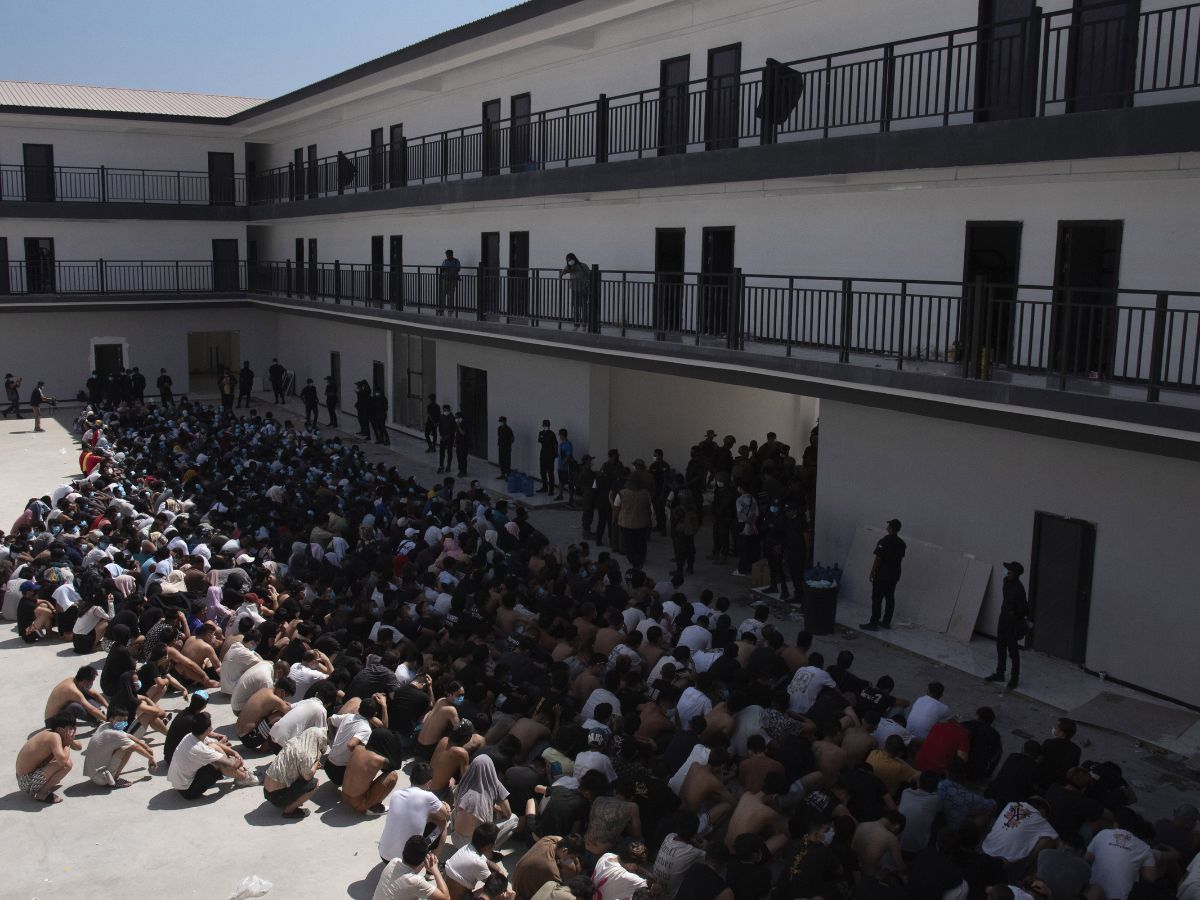
To stream WLTX 19 on your phone, you need the WLTX 19 app.
Next up in 5
Example video title will go here for this video
Next up in 5
Example video title will go here for this video

To stream WLTX 19 on your phone, you need the WLTX 19 app.
Next up in 5
Example video title will go here for this video
Next up in 5
Example video title will go here for this video

XRP has been making headlines after Ripple just announced the completion of a major milestone, sparking excitement in the crypto community. Traders are buzzing and analysts are paying attention to what’s next.
Could XRP become a game-changer for institutional finance? Recent moves suggest it might.
Ripple Completes Hidden Road Acquisition
Ripple has officially completed its acquisition of Hidden Road, which will now operate as Ripple Prime. This makes Ripple the first crypto company to run a global, multi-asset prime brokerage, bringing digital assets to institutional clients on a large scale.
This brings XRP closer to mainstream use in global payments.
James Wynn Takes a Big Bet on XRP
Amid the market excitement, crypto trader James Wynn has made a bold move, committing over $25,000 to a long position in XRP.
“I’ve spent the last 24 hours going down the rabbit hole of XRP. I have decided to invest a SIGNIFICANT portion into XRP ($25k+),” Wynn said.
I’ve spent the last 24hrs going down the rabbit hole of BINANCE:XRPUSDT.
I have decided to invest a SIGNIFICANT portion into XRP. ($25..+)
I believe it could revolutionize the banking systems. It’s a gamble, as all investments are.
Whether you are Team XRP or not. I want everyone to…
Wynn sees XRP as having the potential to significantly impact or improve global banking and payments. While he admits there is uncertainty around its future, he remains optimistic about its long-term prospects. He also welcomed opinions from everyone, seeking clear insights on XRP’s advantages and risks.
Community Weighs In on XRP’s Strengths and Potential
This sparked a lively response from the crypto community. Attorney Bill Morgan noted that over the past 13 years, XRP has consistently stayed in the top 10 by market cap, often ranking in the top 3 or 5.
Others pointed to the technical strengths and community support. Vet, an XRPL dUNL validator, praised its unique consensus model, its status as the second-oldest chain in the top 10, and the passionate “XRP Army.” He also highlighted the layer 1 features like AMM, CLOB, tokens, and NFTs, making it a place where builders have room to grow and bring liquidity.
Crypto influencer Crypto Eri posted a reminder to distinguish between Ripple the company and the XRP Ledger (XRPL), the decentralized open-source blockchain where XRP is the native asset.
While WrathofKahneman a prominent XRP figure, highlighted the strengths of the XRPL. He explained that it was designed for moving value, liquidity, and tokenization, with XRP serving as the network’s privileged token, with no counterparty. It can aggregate liquidity more efficiently than any other tokens issued on the ledger. Unlike other networks, it is a bearer instrument.
Some limitations were also noted. While smart contracts are still in development, retail adoption remains limited, which can frustrate investors. Additionally, some users criticized Ripple’s top executives for selling XRP whenever the price rises.
However, most of them appeared to support Wynn’s move, recognizing its technical strengths and growth potential.
What’s Next for XRP?
XRP is currently trading at $2.53, up 3.5% in the last 24 hours. Analysts remain optimistic about XRP, predicting it could climb to $10 and beyond. Market activity is also heating up as daily trading volumes have jumped over 30% to over 4USDT billion.
Select market data provided by ICE Data Services. Select reference data provided by FactSet. Copyright © 2025 FactSet Research Systems Inc.Copyright © 2025, American Bankers Association. CUSIP Database provided by FactSet Research Systems Inc. All rights reserved. SEC fillings and other documents provided by Quartr.© 2025 TradingView, Inc.

Copyright 2025 – All Right Reserved.
Sunday Guardian Live
By: Brijesh Singh
Last Updated: October 26, 2025 05:48:44 IST
Mumbai: THE DIGITAL GULAG: WHEN SHADOWS FORGED EMPIRES
In the labyrinthine expanse of Southeast Asia’s lawless territories, a vast criminal enterprise—built on the foundations of slavery and digital deception—is experiencing seismic tremors; for years, fortified enclaves in Myanmar, Cambodia, and Laos operated with impunity, churning out billions by forcing hundreds of thousands of trafficked workers to perpetrate online scams. Yet a dramatic convergence of geopolitical anger, ethnic warfare, and high-profile arrests is beginning to fracture the bedrock of this sinister empire.
SLAUGHTER AND TRUST: THE DUAL-VICTIM PARADOX
At its core lies a modern iteration of slave factories: walled cities where individuals, lured by the mirage of high-paying tech employment, find themselves imprisoned. Their passports are confiscated, and under the perpetual shadow of torture, they are compelled to work fifteen-hour days as cogs in a diverse and sophisticated fraud machine.
While the “pig-butchering” scam remains their most infamous and lucrative product, the criminal portfolio of these compounds is dangerously broad. The day-to-day work involves orchestrating a variety of schemes tailored to different targets across the globe. The primary operation is the cryptocurrency investment scam, a cruel psychological theatre. In this long-con, a trafficked worker, using a carefully crafted fake persona, builds deep, often romantic trust with a victim online over weeks or months. This is the “fattening the pig” phase. Once the emotional hook is set, they pivot to financial manipulation, guiding the victim to a fraudulent investment platform that shows incredible, but entirely fabricated, profits. Persuaded to invest their life savings, the victim is then “slaughtered” when the platform is frozen and the scammer vanishes.
Reported cases of “digital arrest” scams in India have surged alarmingly, nearly tripling between 2022 and 2024, with losses now running into hundreds of millions of dollars annually. These scams often use layers of mule accounts and money laundering routes tied to these Southeast Asian hubs, underscoring both the global reach and operational sophistication of the compounds behind them. For each misled and coerced scammer working inside these walled cities, there are countless victims—financially and psychologically devastated—spread across continents, united by a common ordeal at the hands of an invisible criminal empire.
Alongside this, operators run high-volume online gambling scams, luring targets onto rigged betting sites where the house is guaranteed to win. Others engage in more direct forms of fraud, such as romance scams where they solicit money for fake emergencies from people they have emotionally compromised. More corporate-focused schemes include Business Email Compromise (BEC), where they impersonate company executives to authorize fraudulent wire transfers, and large-scale phishing campaigns designed to steal personal data and credentials for resale or further exploitation. This diversified approach allows the syndicates to maximize their illicit revenue streams, turning human misery into a highly profitable, multifaceted criminal enterprise.
This creates a horrifying dual-victim crisis; for every individual financially ruined, another is physically and psychologically shattered while being forced to commit the crime. The United Nations estimates this criminal ecosystem generates upwards of $44 billion annually—a shadow economy rivalling the GDP of the host nations themselves. The core East-Asian compound belt (Myanmar, Cambodia, Laos) is generating around $44 billion a year—roughly 40% of their combined legal GDP—making scam revenue one of the largest “industries” in the region.
OPERATION 1027: WHEN GEOPOLITICAL WINDS SHIFTED
For years, this empire seemed impervious, protected by corrupt officials and powerful local militias. But in late 2023, the ground beneath it began to shift; the catalyst was Operation 1027, a stunning military offensive launched by an alliance of ethnic armed groups in northern Myanmar known as the Three Brotherhood Alliance. While their primary objective was to reclaim territory from Myanmar’s ruling military junta, the Tatmadaw, they harboured another powerful, and unusually public, ambition: to eradicate the cyber scam compounds operating in the region.
This was no mere coincidence; the offensive had the tacit blessing of Beijing. China, having long tolerated the criminal underworld on its border, had finally exhausted its patience; its own citizens were being trafficked and scammed on an industrial scale, and the public outcry had become deafening. The scam syndicates had grown too brazen, too violent, and were destabilizing a key strategic border. Beijing signalled its displeasure, and the ethnic armies—long opposed to the junta that profited from the scam centres—recognised their moment. Operation 1027 was not merely a military campaign; it represented a targeted demolition of the scam industry’s nerve centre.
THE MING DYNASTY’S FALL: CRIME LORDS AND THEIR DEMISE
The fall of Laukkaing, a notorious hub of scam operations in the Kokang region, marked a watershed moment; as the rebel alliance advanced, the criminal syndicates that had governed the city as personal fiefdoms began to disintegrate. This precipitated one of the most significant developments in the fight against these networks: the downfall of the Ming family.
Ming Xuechang, a former official and undisputed crime lord of Laukkaing, administered his territory as a criminal enterprise, complete with his own private militia and deep connections to the Myanmar junta. His family occupied the apex of the scam industry, responsible for trafficking and enslaving thousands. But as Operation 1027 closed in, their impunity evaporated; Chinese authorities, collaborating with the advancing ethnic armies, issued arrest warrants for the entire family. In a desperate attempt to flee, Ming Xuechang reportedly took his own life; his children were captured and extradited to China in a widely publicized event, paraded on state television as a stark admonition to other crime lords. Their subsequent court case in China exposed the inner workings of these syndicates, detailing the immense profits, the brutal treatment of captives, and the deep-seated corruption that had enabled their reign.
The success of Operation 1027 and China’s crackdown sent shockwaves through the region’s underworld; the Tatmadaw, reeling from territorial losses and embarrassed by its links to the disgraced crime families, was compelled to act. Having lost control in the north, the junta turned its attention to another infamous scam hub not yet under rebel control: KK Park.
KK PARK: A CALCULATED GESTURE IN THEATRE OF WAR
Situated near the Thai border, KK Park constitutes a sprawling, purpose-built city of fraud, estimated to house over 20,000 captive workers within its hundreds of buildings; it had long symbolized the junta’s complicity. But in October 2025, in a highly publicised manoeuvre, the Tatmadaw raided the compound; state media reported the arrest of over 2,000 individuals and the seizure of 30 Starlink satellite terminals—a critical technology enabling the compounds to operate independently of local infrastructure.
While presented as a decisive blow against crime, many observers perceive this raid as a calculated move by a weakened junta desperate to reclaim even a sliver of international legitimacy and appease Beijing; the military leadership needed to demonstrate they remained in control of something and were willing to sacrifice one criminal asset to protect their broader interests. The raid on KK Park represented less a moral awakening and more a symptom of shifting power dynamics in Myanmar’s complex conflict landscape.
THE HYDRA’S HEADS: WHEN SHADOWS MIGRATE AND EVOLVE
Despite these dramatic events, the empire of scams remains far from defeated; it is a highly adaptive, decentralized network. As pressure mounts in one region, operators migrate to others, establishing new bases in Laos, the Philippines, and even exploring opportunities in the Middle East and Africa. The criminal playbook continues to evolve, incorporating AI-powered deepfakes and voice cloning to create increasingly convincing scams. Cryptocurrency remains the lifeblood of this industry, facilitating the instantaneous, anonymous movement of billions in stolen funds and frustrating international law enforcement efforts to trace the money.
Recent developments have revealed that this criminal enterprise, once appearing invincible, possesses vulnerabilities; it thrives in the shadows of state failure and corruption yet proves susceptible to shifts in geopolitical power. The fall of the Ming family and the raid on KK Park demonstrate that when political will is exerted, even the most entrenched criminal networks can be dismantled. Nevertheless, these remain isolated victories in a much larger war; as long as lawless territories exist where profit can be extracted from human misery, this new iteration of the slave trade will find sanctuary.
The struggle to eradicate it transcends mere law enforcement—it represents a battle for the rule of law itself in the forgotten borderlands of our increasingly interconnected world.
Brijesh Singh is a senior IPS officer and an author (@brijeshbsingh on X). His latest book on ancient India, “The Cloud Chariot” (Penguin) is out on stands. Views are personal.
Keep me signed in until I sign out
Forgot your password?
A new password will be emailed to you.
Have received a new password? Login here

Just when you thought the world of cryptocurrency couldn’t get any more electrifying, OKX has unleashed a wave of new perpetual swap listings that promise to upend trading paradigms. With the option to trade via USDT pairs and leverage reaching an astonishing 50x, both trading veterans and fresh faces alike are gearing up for what could be a rollercoaster of market activity. But what do these new offerings spell for market stability and trading dynamics?
In the realm of cryptocurrency, the latest perpetual swaps launched by OKX herald a thrilling new chapter in trading. By linking contracts to USDT and offering the tantalizing allure of 50x leverage, OKX is inviting traders into an exhilarating arena designed for risk-takers and strategists. The potential for outsized gains is not without its pitfalls; such leverage can catalyze wild price fluctuations, putting assets like APR and PROVE in the line of fire.
Market analysts are now watching closely as these new trading instruments may not only alter OKX’s positioning within the industry but could also reshape the entire landscape of derivative trading. As excitement builds around these perpetual contracts, they promise to attract new participants and elevate trading volumes, prompting both seasoned traders and newcomers to rethink their methods.
When high-leverage trading products enter the fray, they often lead to surges in trading activity. Past experiences show that such innovations can decisively shift short-term asset valuations. Traders are given the green light to diversify their strategies, often exacerbating asset price swings in their pursuit of higher returns. This influx of eager traders can result in quickly moving valuations, underscoring the necessity of understanding complex market patterns for anyone participating in this unpredictable environment.
As engagement rates climb, the performance of these perpetual swap offerings will be paramount in shaping the flow of market activities. This presents a dual-edged sword of opportunity and risk that demands meticulous attention.
While the siren call of 50x leverage is undeniably compelling, it is a precarious game that requires a cautious mindset. The potential for swift and devastating losses is as real as the lure of significant profits. Therefore, forming a robust risk management strategy is not just wise; it is essential. An informed approach can help traders navigate the turbulent waters stirred by these perpetual swaps, enabling them to maintain a balanced stance amid market volatility.
A clear grasp of the financial implications of engaging in perpetual contracts is non-negotiable. Knowledge equips traders to unearth opportunities while simultaneously parrying the inherent risks associated with leveraged trading.
The advent of perpetual swap listings has a track record of kindling speculative interest. As traders delve into these fresh trading options, they must remain cognizant of the rapid asset value shifts that could catch them off guard. Incorporating derivatives into their playbook can unlock pathways for profit, yet it is the careful scrutiny of market movements and external economic triggers that will ultimately determine long-term viability in this fast-paced sector.
Meanwhile, OKX’s recent partnership with Standard Chartered Bank is a strategic move to bolster trust among institutional players. By ensuring robust security and regulatory compliance, this collaboration illustrates how traditional banking principles can intersect with the forward-thinking ethos of blockchain, thereby fortifying market integrity.
With the cryptocurrency sphere evolving rapidly, regulatory oversight is becoming ever more critical. The introduction of high-leverage products raises pertinent questions about market stability. The lessons learned from high-profile crypto incidents have rendered regulatory compliance a high-stakes priority for exchanges like OKX. Protecting user interests while adapting to changing regulations is essential in maintaining a sound trading environment.
OKX’s progression into regulated spaces, particularly following its MiCA licensing in Malta, signals an unwavering commitment to meeting rigorous regulatory standards while still offering innovative trading solutions. This shift illustrates a growing consensus that secure and compliant trading frameworks are indispensable for fostering enduring growth in the crypto market.
As OKX expands its trading offerings, the implications for user engagement and broader market interactions promise to be profound. These newly minted trading pairs not only generate immediate prospects but also serve as a barometer for the evolution of cryptocurrency trading strategies and risk management. The harmonious blend of innovation and regulation will shape the landscape, influencing how effectively markets manage the turbulence that accompanies leveraged trading and perpetual contracts.
In conclusion, the fresh wave of perpetual swap trading options at OKX marks a transformative juncture for the cryptocurrency ecosystem. With abundant opportunities for dynamic trading and diversified speculative strategies, traders find themselves in a landscape brimming with potential. However, a steadfast vigilance towards market dynamics, asset volatility, and regulatory compliance cannot be overstated. Striking the right balance between innovative risk-taking and prudent portfolio management will be crucial as this sector continues to evolve. The future of cryptocurrency trading is poised to be marked not solely by increasing transaction volumes but also by a steadfast commitment to ensuring a stable and secure trading landscape, harmonizing the avant-garde innovations of blockchain with the enduring reliability of traditional finance.
Get started with Web3 Busineses effortlessly. OneSafe brings together your crypto and banking needs in one simple, powerful platform.
Tron (TRX) falls below $0.30, raising investor concerns. Analyze support levels and market trends shaping the cryptocurrency landscape amid volatility.
U.S. inflation data profoundly influences Bitcoin prices. Explore how CPI impacts cryptocurrency investments and market sentiment among institutional players.
OKX cryptocurrency exchange launches perpetual swaps, offering USDT trading pairs and 50x leverage, transforming trading dynamics and strategies.
Begin your journey with OneSafe today. Quick, effortless, and secure, our streamlined process ensures your account is set up and ready to go, hassle-free

What if I told you that the pulse of Bitcoin’s market can be felt in the cadence of U.S. inflation rates? In an investment landscape as unpredictable as cryptocurrencies, recent Consumer Price Index (CPI) reports have ignited a fervor—particularly for Bitcoin enthusiasts. The correlation between CPI fluctuations and Bitcoin valuations hints at a deeper relationship between traditional economic indicators and the volatile world of digital assets, where the stakes are sky-high and the movements can be exhilarating.
The latest missive from the U.S. Bureau of Labor Statistics has unveiled a 3.0% year-over-year uptick in inflation for September, albeit falling slightly short of the anticipated 3.1%. This inconspicuous discrepancy has breathed new life into the cryptocurrency scene, prompting investors to reflect on the ramifications when inflation cools. Such conditions typically favor flirtation with riskier assets like Bitcoin and Ethereum. With traders acutely observing these economic signals, they are left pondering how the Federal Reserve’s decisions might sway the tides of their investments.
A quick glance at Bitcoin’s past reveals a consistent pattern of response to CPI outcomes. History tells us that dips in inflation tend to send Bitcoin on a thrilling upward trajectory. For example, following previous CPI disclosures that showcased slowing inflation, institutional investors eagerly caravaned toward cryptocurrencies, propelling prices into bullish realms.
This September, Bitcoin experienced a breathtaking ascent beyond the $111,000 mark before retreating to approximately $110,500. This rollercoaster ride highlights not only Bitcoin’s ongoing tango with economic indicators, but also provides insight into the sentiment swings of investors, who are heavily influenced by the Federal Reserve’s potential rate decisions.
The Federal Reserve’s policy moves are akin to a puppet master, orchestrating the behaviors of investors across all financial markets, cryptocurrencies included. A shift toward lower CPI inflation typically diminishes fears of immediate interest rate hikes, creating a more welcoming climate for risk-laden investments. Analysts and traders now find themselves dissecting these economic indicators, contemplating how potential shifts may incite changes in the Federal Reserve’s strategic outlook, subsequently affecting future regulatory environments for cryptocurrencies.
With heightened optimism surrounding favorable CPI readings, it isn’t outlandish to suggest that these current trends might fuel deeper liquidity in the crypto markets. As the policy landscape morphs in response to these inflation metrics, institutional interest in cryptocurrencies like Bitcoin could crescendo, thrusting prices even higher.
As Bitcoin’s value wrestles with these economic uncertainties, prevailing market sentiment remains firmly locked onto larger economic signals. Institutional investors, in particular, are weaving CPI trends into their strategies, weighing their impacts on digital asset investments. The noticeable surge in institutional engagement signals an awakening among market players, as they increasingly recognize Bitcoin’s historical resilience amid shifting economic headwinds.
However, don’t overlook the bearish undertone among smaller holders, indicated by negative funding rates. This pessimism may, paradoxically, provide fertile ground for a potential short squeeze, as substantial institutional buyers enter the fray, emboldened by encouraging CPI outcomes.
The intricate balance between inflation statistics and regulatory frameworks holds significant sway within the cryptocurrency domain. A noticeable shift in CPI patterns could very well signal the onset of adjustments in regulations, demanding that digital asset firms reevaluate how they approach compliance and customer interactions. Favorable CPI outcomes may foster a more lenient regulatory environment, smoothing the path for seamless integration between cryptocurrencies and standard fiat transactions.
As businesses navigate the labyrinth of compliance, they stand the chance to leverage more favorable market conditions, paving the way for crypto enterprises to thrive in a volatile economy. Staying plugged into regulatory developments is crucial as firms seek to capitalize on adjustments amidst a rapidly evolving landscape.
The intricate dance between U.S. inflation reports and Bitcoin’s market movements is both fascinating and enlightening. Recent CPI data has played a critical role in shaping cryptocurrency valuations, underscoring the intricate ties that bind traditional economic indicators to the realm of digital assets. As inflation continues to dominate headlines, investors must remain alert, reading between the lines of CPI metrics and their potential implications for Federal Reserve policy.
Recognizing these dynamics not only unveils the complexities of market behavior but also equips investors with the insights needed for astute decision-making in this fast-paced financial ecosystem. As we continue to keep a close watch on inflation trends, it’s clear that they will keep shaping the financial narratives around Bitcoin and its cryptocurrency counterparts, ensuring that the excitement remains alive.
Get started with Crypto effortlessly. OneSafe brings together your crypto and banking needs in one simple, powerful platform.
Tron (TRX) falls below $0.30, raising investor concerns. Analyze support levels and market trends shaping the cryptocurrency landscape amid volatility.
U.S. inflation data profoundly influences Bitcoin prices. Explore how CPI impacts cryptocurrency investments and market sentiment among institutional players.
OKX cryptocurrency exchange launches perpetual swaps, offering USDT trading pairs and 50x leverage, transforming trading dynamics and strategies.
Begin your journey with OneSafe today. Quick, effortless, and secure, our streamlined process ensures your account is set up and ready to go, hassle-free